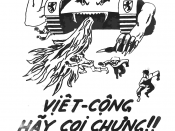"The word photography, which is derived from the Greek words for light and writing, was first used by Sir John Herschel in 1839: the year the invention of the photographic process was made public" (Camera Canada, 2005). Photography, ever since its invention, has been an important part of the visual culture. One of the interpretive tools used to analyze photographic images is semiology, which is also referred to as 'the study of signs' (Rose, 2001: 69). The semiotic approach takes a photographic "image apart" into parts such as iconic, indexical and symbolic signs, and "traces how it works in broader systems of meaning" (Rose, 2001: 69). This is where "interpretive debate among semiologists over the status of signs in photographic images" arises (Rose, 2001: 82). While some semiologists believe that the signs present in every photograph are solely adequate to understand its meaning, others argue against that by stating that there are some points in certain photographs that elude analysis (Rose, 2001: 82).
I agree with the latter and believe that there are some things in a photograph that escape the objective, analytical scrutiny and yet, leave an impact on its viewer.
John Tagg and Roland Barthes, respectively, represent the two unique schools of thought pertaining to the analysis of photographs using semiology. John Tagg is an advocate of the view that photography can be only given meaning by studying them within "certain institutional apparatuses" whereas Roland Barthes, one of the pioneer semiologists, is an exponent of the view that "there are points in some photographs that shock the viewer with their intractable reality" (Rose, 2001: 82, 167). One major difference between the two is that Tagg's approach towards interpretation of photography is objective and focuses on producing meaning of an image only within the realms of an...



Very well written
nice piece of information
0 out of 0 people found this comment useful.